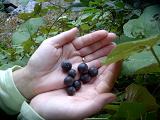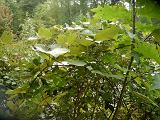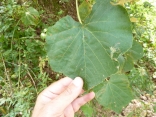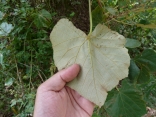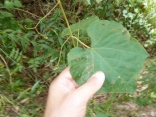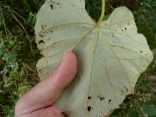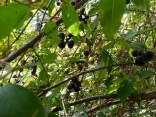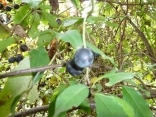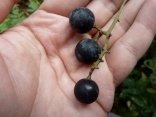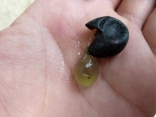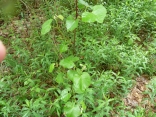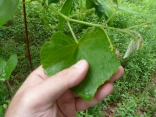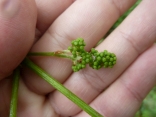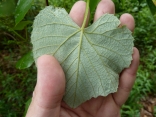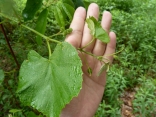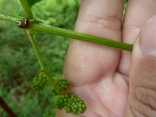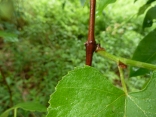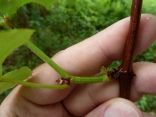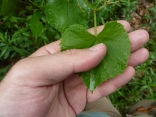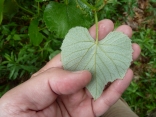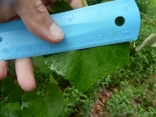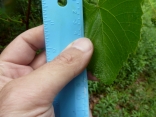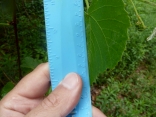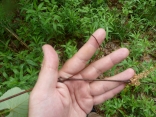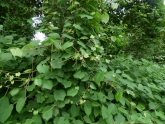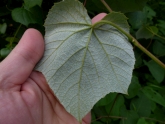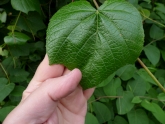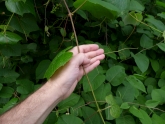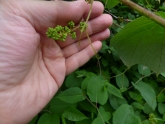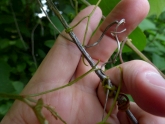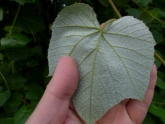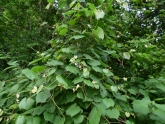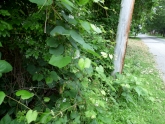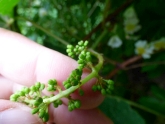There are some key differences between the Fox Grape and the Riverbank Grape plants (See Riverbank Grape plant pictures here.) Notice that the leaf of the Fox Grape has much smaller teeth and lobes than the Riverbank Grape leaf. The back of the Fox Grape leaf has a whitish or copperish colored hairy or felt-like surface. The back of the Riverbank Grape leaf has some hairs, but not many. The grapes of the Riverbank Grape tend to be small (more like supermarket grapes) and more sour-tasting. The grapes of the Fox Grape tend to be larger and more sweet, especially if fully ripe.
Wild grape plants are not vines that are herbaceous and die off each year. They are “liana” which are woody, vine-like growths that do not die back each year. All of the wild grape species have tendrils for climing that are opposite a leaf. All wild grape species have maple-like leaves.
The grapes of Riverbank Grape tend to be higher in tartrate crystals which can be irritating to the digestive system for some individuals. The grapes of Fox Grape have lower levels of tartrate crystals. To get rid of tartrate crystals, mash the grapes into juice. Let the juice settle overnight. In the morning, a sludge will appear at the bottom of the jar that contains much of the tartrate. Carefully pour off the juice and discard the sludge.

